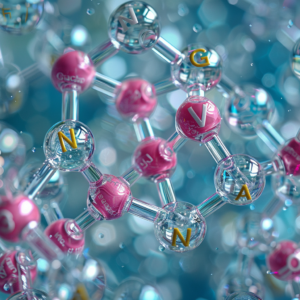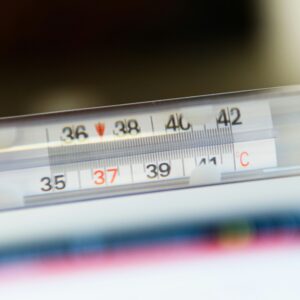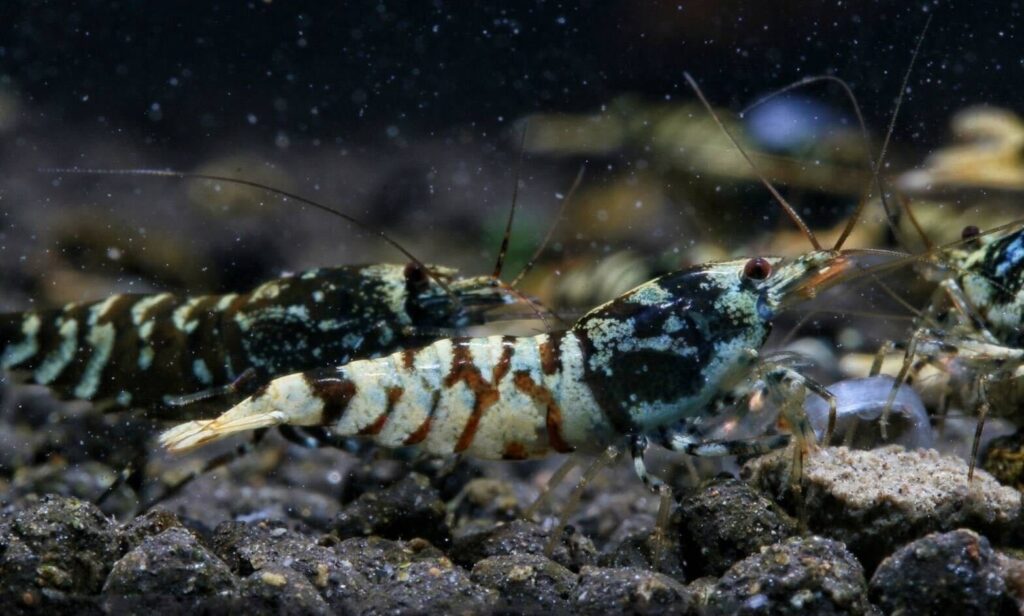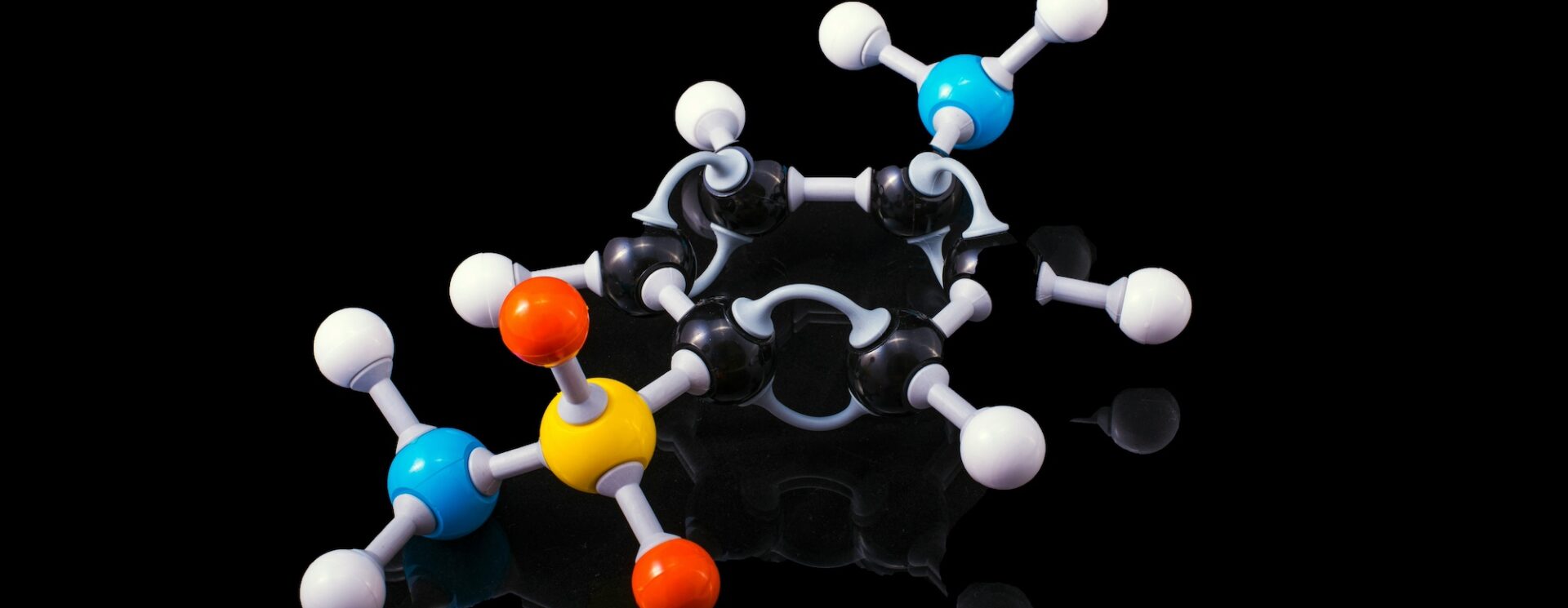Understanding the interplay between pH and ammonia toxicity is important for shrimp keepers striving to create and sustain a thriving tank ecosystem. By grasping this relationship, aquarists can effectively manage water parameters to mitigate the harmful effects of ammonia buildup, ensuring a hospitable habitat for their cherished shrimp.
pH and Ammonia Toxicity
 pH levels play a pivotal role in modulating the toxicity of ammonia within aquariums. The acidity or alkalinity of the water significantly influences the proportion of unionized ammonia (NH3), a highly toxic form, versus its ionized counterpart, ammonium (NH4), which is less harmful to aquatic organisms.
pH levels play a pivotal role in modulating the toxicity of ammonia within aquariums. The acidity or alkalinity of the water significantly influences the proportion of unionized ammonia (NH3), a highly toxic form, versus its ionized counterpart, ammonium (NH4), which is less harmful to aquatic organisms.
It’s important to understand that the ammonia reading from test kits actually represents the sum of Total Ammonia, which comprises both Ammonia (NH3) and Ammonium (NH4). The nitrification and ammonification processes within the aquarium substrate and filtration system contribute to the production of this Total Ammonia.
At low pH levels (below 6.0), a process called ammonification occurs. Remember, pH is an inverse measure of hydrogen ion concentration. At low pH, there’s a higher concentration of hydrogen ions, while at high pH, there are fewer. In these acidic conditions, ammonia (NH3) absorbs an extra hydrogen ion, transforming into ammonium (NH4).
The reason Ammonium (NH4) is less toxic to fish and shrimp is twofold:
- The added hydrogen ion makes NH4 less permeable to the gills of fish and shrimp.
- NH4 can be excreted across the gills via a carrier-mediated process in exchange for sodium (Na+).
As the pH rises, the balance shifts towards the more toxic unionized ammonia (NH3). In alkaline conditions, more NH4 converts to NH3, significantly elevating its toxicity. This pH-dependent dynamic is crucial for maintaining shrimp health in aquaria.
At varying pH levels, the toxicity of ammonia exhibits distinct patterns:
- In acidic conditions (low pH): Ammonium (NH4) predominates, posing minimal harm to shrimp.
- In neutral to alkaline conditions (higher pH): The balance shifts towards ammonia (NH3), which is significantly more toxic.
Understanding these pH-dependent dynamics is essential for aquarium keepers. By monitoring and maintaining appropriate pH levels, you can help ensure that the ammonia in your tank remains in its less toxic form, thereby safeguarding the health of your shrimp and other aquatic life.
Influence of Temperature on Ammonia Toxicity
 Temperature exerts a notable influence on the toxicity of ammonia in aquatic environments. As water temperature rises, the rate of ammonia production escalates, intensifying the challenges associated with maintaining water quality in shrimp tanks.
Temperature exerts a notable influence on the toxicity of ammonia in aquatic environments. As water temperature rises, the rate of ammonia production escalates, intensifying the challenges associated with maintaining water quality in shrimp tanks.
Empirical data reveal the correlation between temperature, pH, and the proportion of un-ionized ammonia (NH3) in the water. These findings underscore the interplay between multiple environmental factors in shaping ammonia toxicity dynamics.
Elevated temperatures exacerbate the toxicity of ammonia, particularly in conjunction with higher pH levels. The increased presence of un-ionized NH3 at elevated temperatures and alkaline pH poses a heightened risk to shrimp health, necessitating vigilant temperature control and pH management to mitigate potential adverse effects.
Practical Implications for Shrimp Keepers
Understanding the relationship between pH and ammonia toxicity has several important implications for shrimp keepers:
- Regular Testing:
- Consistently monitor both pH and ammonia levels in your tank.
- Use reliable test kits that measure Ammonia NH3/NH4
- pH Management:
- For most caridina shrimp species, maintain an acidic pH (5.4-6.2).
- Be cautious about sudden pH changes, which can stress shrimp.
- Buffering Systems:
- Consider using pH buffering substrates or additives to stabilize pH.
- This is particularly important for sensitive species like Crystal Red Shrimp.
- Cycling and Maintenance:
- Ensure your tank is fully cycled before adding shrimp.
- Perform regular water changes to prevent ammonia buildup.
- Feeding Practices:
- Avoid overfeeding, which can lead to excess ammonia production.
- Remove uneaten food promptly to prevent decomposition.
- Plant Management:
- Incorporate live plants to help absorb excess nutrients and stabilize pH.
- Be aware that some plants can alter water chemistry.
- Emergency Procedures:
- In case of ammonia spikes, lowering pH slightly can reduce toxicity temporarily. But also be conscious of sudden pH changes
- Use ammonia-neutralizing products as a short-term solution.
- Stocking Decisions:
- Be mindful of bioload. Overstocking can lead to ammonia issues.
- Introduce shrimp gradually to allow the biological filtration to adjust.
- Filter Maintenance:
- Regularly clean filters without disrupting beneficial bacteria.
- Consider using biological media to enhance ammonia conversion.
- Water Source Awareness:
- Test your source water for ammonia and pH.
- Use appropriate water conditioners to neutralize chloramine, which can release ammonia.
- Species-Specific Considerations:
- Research the optimal pH range for your specific shrimp species.

The ideal conditions for keeping sensitive caridina shrimp are:
TDS 100-120
pH 5.4-6.2
GH of 4-5
KH 0-1
Temperature 60-72 F
*notice the low pH and temperature requirements. Caridina are extremely sensitive to NH3/NH4. These conditions will help minimize the impact of ammonia if it were to appear in your tank.
Shrimp keepers encounter diverse scenarios where the interplay between pH and ammonia toxicity manifests differently. For instance, in heavily planted tanks with abundant biological filtration, lower pH levels may promote the presence of less toxic ammonium (NH4), fostering a favorable environment for shrimp. Conversely, in tanks with minimal buffering capacity and higher pH, the risk of elevated ammonia toxicity, stemming from increased NH3 concentrations, necessitates diligent monitoring and management.
Water changes are a routine aspect of aquarium maintenance, yet their execution demands careful consideration, particularly in low pH tanks. Abrupt alterations in pH levels during water changes can trigger shifts in the balance between NH3 and NH4, potentially exposing shrimp to heightened ammonia toxicity. Shrimp keepers are advised to perform gradual water changes using the drip method and utilize pH-stabilizing techniques to mitigate stress and safeguard shrimp health.
By applying these practical considerations, shrimp keepers can create a more stable and healthy environment for their shrimp, minimizing the risk of ammonia toxicity and pH-related stress. Remember, consistency is key in shrimp keeping, and small, gradual adjustments are always preferable to sudden changes.
Conclusion
The intricate relationship between pH level, temperature, and ammonia toxicity underscores the complexity of maintaining optimal water parameters in shrimp tanks. pH serves as a critical determinant of ammonia toxicity, influencing the prevalence of the highly toxic NH3 versus the less harmful NH4. Temperature exacerbates ammonia toxicity, particularly in conjunction with higher pH levels, emphasizing the importance of comprehensive water parameter management.
The significance of maintaining optimal pH levels cannot be overstated in the context of shrimp health and well-being. By fostering conditions conducive to the predominance of less toxic ammonium (NH4) and minimizing the presence of hazardous ammonia (NH3), shrimp keepers can mitigate potential stressors and create a thriving habitat for their aquatic companions.










